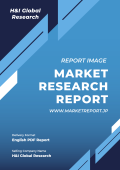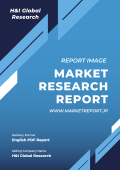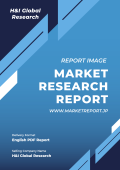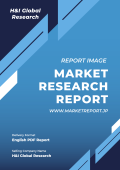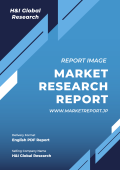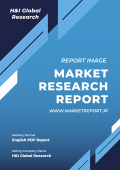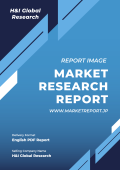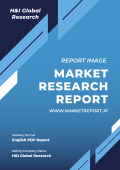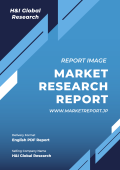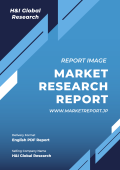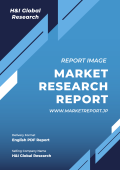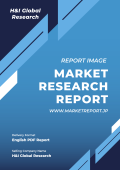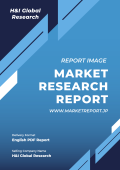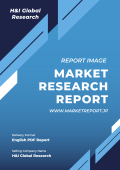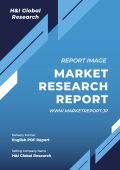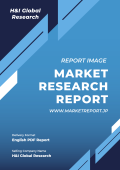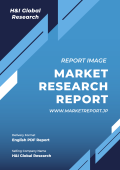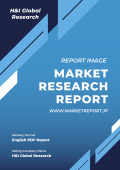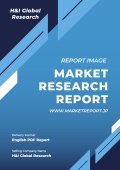| ■ 英語タイトル:HVDC Converter Station Market by Component (Converter, DC Equipment, Converter Transformer, and Others), Technology (Voltage Source Converter (VSC), Line Commutated Converter (LCC)), Type (Bi-Polar, Monopolar, Back-to-back, Multi Terminal), Application (Power Industry, Oil and Gas, Powering Island and Remote Loads, Interconnecting Networks, and Others), and Region 2023-2028
|
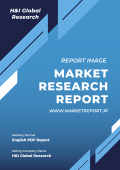 | ■ 発行会社/調査会社:IMARC
■ 商品コード:IMARC23JLY108
■ 発行日:2023年7月
■ 調査対象地域:グローバル
■ 産業分野:エネルギー
■ ページ数:144
■ レポート言語:英語
■ レポート形式:PDF
■ 納品方式:Eメール
|
■ 販売価格オプション
(消費税別)
※販売価格オプションの説明はこちらで、ご購入に関する詳細案内はご利用ガイドでご確認いただけます。
※お支払金額は「換算金額(日本円)+消費税+配送料(Eメール納品は無料)」です。
※Eメールによる納品の場合、通常ご注文当日~2日以内に納品致します。
※レポート納品後、納品日+5日以内に請求書を発行・送付致します。(請求書発行日より2ヶ月以内の銀行振込条件、カード払いも可能)
※IMARC社の概要及び新刊レポートはこちらでご確認いただけます。
*** レポート概要(サマリー)***IMARC社の本市場調査レポートでは、2022年に112.6億ドルであった世界のHVDCコンバーターステーション市場規模が、2028年までに171.9億ドルに達し、予測期間中(2023-2028)に年平均7.50%成長すると予想しています。本レポートでは、HVDCコンバーターステーションの世界市場について調査・分析し、序論、市場範囲・定義、エグゼクティブサマリー、イントロダクション、市場概況、コンポーネント別(コンバータ、DC機器、コンバータ変圧器、その他)分析、技術別(電圧源コンバータ(VSC)、線路整流コンバータ(LCC))分析、種類別(バイポーラ、モノポーラ、バックツーバック、マルチ端子)分析、用途別(電力、石油&ガス、離島&遠隔負荷用電力供給、相互接続ネットワーク、その他)分析、地域別(北米、アメリカ、カナダ、アジア太平洋、中国、日本、インド、韓国、オーストラリア、インドネシア、ヨーロッパ、ドイツ、フランス、イギリス、イタリア、スペイン、ロシア、中南米、ブラジル、メキシコ、中東・アフリカ)分析、推進要因・制約・機会、バリューチェーン分析、ファイブフォース分析、価格分析、競争状況などの項目を掲載しています。また、本書には、GE Grid Solutions LLC(General Electric Company)、Hitachi Energy Ltd.(Hitachi Ltd.)、Hyosung Heavy Industries、Mitsubishi Electric Corporation、NR Electric Co. Ltd.(NARI Technology Co. Ltd.)、Siemens Energy AGなどの企業情報が含まれています。
・序論
・市場範囲・定義
・エグゼクティブサマリー
・イントロダクション
・市場概況
・世界のHVDCコンバーターステーション市場規模:コンポーネント別
- コンバータの市場規模
- DC機器の市場規模
- コンバータ変圧器の市場規模
- その他コンポーネントの市場規模
・世界のHVDCコンバーターステーション市場規模:技術別
- 電圧源コンバータ(VSC)技術の市場規模
- 線路整流コンバータ(LCC)技術の市場規模
・世界のHVDCコンバーターステーション市場規模:用途別
- 電力における市場規模
- 石油&ガスにおける市場規模
- 離島&遠隔負荷用電力供給における市場規模
- 相互接続ネットワークにおける市場規模
- その他用途における市場規模
・世界のHVDCコンバーターステーション市場規模:地域別
- 北米のHVDCコンバーターステーション市場規模
アメリカのHVDCコンバーターステーション市場規模
カナダのHVDCコンバーターステーション市場規模
- アジア太平洋のHVDCコンバーターステーション市場規模
中国のHVDCコンバーターステーション市場規模
日本のHVDCコンバーターステーション市場規模
インドのHVDCコンバーターステーション市場規模
…
- ヨーロッパのHVDCコンバーターステーション市場規模
ドイツのHVDCコンバーターステーション市場規模
フランスのHVDCコンバーターステーション市場規模
イギリスのHVDCコンバーターステーション市場規模
…
- 中南米のHVDCコンバーターステーション市場規模
ブラジルのHVDCコンバーターステーション市場規模
メキシコのHVDCコンバーターステーション市場規模
…
- 中東・アフリカのHVDCコンバーターステーション市場規模
・推進要因・制約・機会
・バリューチェーン分析
・ファイブフォース分析
・価格分析
・競争状況 |
Market Overview:
The global HVDC converter station market size reached US$ 11.26 Billion in 2022. Looking forward, IMARC Group expects the market to reach US$ 17.19 Billion by 2028, exhibiting a growth rate (CAGR) of 7.50% during 2023-2028. The widespread adoption of renewable energy and HVDC converter stations for interconnecting power grids across different regions or countries, and the numerous government initiatives promoting renewable energy deployment represent some of the key factors driving the market.
An HVDC converter station, short for a high-voltage direct current converter station, is crucial in high-voltage direct current (HVDC) transmission systems. It functions as a bridge between various power systems, enabling the stable and effective transfer of electricity across great distances. Its primary duty is to change electricity from alternating current (AC) to direct current (DC) or vice versa, depending on the direction the power is flowing. The converter station consists of various key elements that work in harmony to facilitate the conversion process. One of the main components is the converter transformer, which is responsible for stepping up or down the AC power’s voltage level. These transformers are typically designed to handle extremely high voltages, ranging from a few hundred kilovolts to several hundreds of kilovolts, depending on the specific HVDC transmission system. Additionally, it also incorporates smoothing reactors, which are used to smooth out any fluctuations in the DC power, reducing ripple effects and improving overall power quality. Moreover, the station includes filters and harmonic traps to mitigate harmonics and other electrical disturbances that may arise during the conversion process.
HVDC Converter Station Market Trends:
The growing trend of renewable energy majorly drives the global market. Coupled with the augmenting need for efficient transmission of power from remote renewable energy generation sites to population centers, this is significantly supporting the market. Along with this, the widespread adoption of HVDC converter stations for interconnecting power grids across different regions or countries is propelling the market as they enable the transfer of electricity between asynchronous AC grids, facilitating the exchange of power, improving grid stability, and enhancing overall energy security. In addition, the increasing inclination toward HVDC systems over AC transmission as they offer lower transmission losses, reduced voltage drops, and increased power transfer capacity over longer distances is positively influencing the market. As the demand for long-distance power transmission increases, the demand for HVDC converter stations grows, thereby creating a positive market outlook. Apart from this, government initiatives promoting renewable energy deployment, grid interconnections, and energy market liberalization are contributing to the market. Furthermore, the development of advanced power electronic devices, improved converter station designs, and enhanced control and protection systems are creating a positive market outlook. Some of the other factors driving the market include rapid industrialization and the increasing number of offshore wind farms.
Key Market Segmentation:
IMARC Group provides an analysis of the key trends in each segment of the global HVDC converter station market, along with forecasts at the global, regional, and country levels from 2023-2028. Our report has categorized the market based on component, technology, type, and application.
Component Insights:
Converter
DC Equipment
Converter Transformer
Others
The report has provided a detailed breakup and analysis of the HVDC converter station market based on the component. This includes converter, DC equipment, converter transformer, and others. According to the report, the DC equipment represented the largest segment.
Technology Insights:
Voltage Source Converter (VSC)
Line Commutated Converter (LCC)
A detailed breakup and analysis of the HVDC converter station market based on the technology has also been provided in the report. This includes voltage source converter (VSC) and line commutated converter (LCC). According to the report, line commutated converter (LCC) accounted for the largest market share.
Type Insights:
Bi-Polar
Monopolar
Back-to-back
Multi Terminal
The report has provided a detailed breakup and analysis of the HVDC converter station market based on the type. This includes bi-polar, monopolar, back-to-back, and multi terminal. According to the report, the bi-polar represented the largest segment.
Application Insights:
Power Industry
Oil and Gas
Powering Island and Remote Loads
Interconnecting Networks
Others
A detailed breakup and analysis of the HVDC converter station market based on the application has also been provided in the report. This includes power industry, oil and gas, powering island and remote loads, interconnecting networks, and others. According to the report, powering island and remote loads accounted for the largest market share.
Regional Insights:
North America
United States
Canada
Asia Pacific
China
Japan
India
South Korea
Australia
Indonesia
Others
Europe
Germany
France
United Kingdom
Italy
Spain
Russia
Others
Latin America
Brazil
Mexico
Others
Middle East and Africa
The report has also provided a comprehensive analysis of all the major regional markets, which include North America (the United States and Canada); Asia Pacific (China, Japan, India, South Korea, Australia, Indonesia, and others); Europe (Germany, France, the United Kingdom, Italy, Spain, Russia and others); Latin America (Brazil, Mexico, and others); and the Middle East and Africa. According to the report, Europe was the largest market for HVDC converter station. Some of the factors driving the Europe HVDC converter station market included the emerging trend of renewable energy, continual technological advancements, rapid industrialization, etc.
Competitive Landscape:
The report has also provided a comprehensive analysis of the competitive landscape in the global HVDC converter station market. Also, detailed profiles of all major companies have been provided. Some of the companies covered include GE Grid Solutions LLC (General Electric Company), Hitachi Energy Ltd. (Hitachi Ltd.), Hyosung Heavy Industries, Mitsubishi Electric Corporation, NR Electric Co. Ltd. (NARI Technology Co. Ltd.), Siemens Energy AG, etc. Kindly note that this only represents a partial list of companies, and the complete list has been provided in the report.
Market Overview:
The global HVDC converter station market size reached US$ 11.26 Billion in 2022. Looking forward, IMARC Group expects the market to reach US$ 17.19 Billion by 2028, exhibiting a growth rate (CAGR) of 7.50% during 2023-2028. The widespread adoption of renewable energy and HVDC converter stations for interconnecting power grids across different regions or countries, and the numerous government initiatives promoting renewable energy deployment represent some of the key factors driving the market.
An HVDC converter station, short for a high-voltage direct current converter station, is crucial in high-voltage direct current (HVDC) transmission systems. It functions as a bridge between various power systems, enabling the stable and effective transfer of electricity across great distances. Its primary duty is to change electricity from alternating current (AC) to direct current (DC) or vice versa, depending on the direction the power is flowing. The converter station consists of various key elements that work in harmony to facilitate the conversion process. One of the main components is the converter transformer, which is responsible for stepping up or down the AC power’s voltage level. These transformers are typically designed to handle extremely high voltages, ranging from a few hundred kilovolts to several hundreds of kilovolts, depending on the specific HVDC transmission system. Additionally, it also incorporates smoothing reactors, which are used to smooth out any fluctuations in the DC power, reducing ripple effects and improving overall power quality. Moreover, the station includes filters and harmonic traps to mitigate harmonics and other electrical disturbances that may arise during the conversion process.
HVDC Converter Station Market Trends:
The growing trend of renewable energy majorly drives the global market. Coupled with the augmenting need for efficient transmission of power from remote renewable energy generation sites to population centers, this is significantly supporting the market. Along with this, the widespread adoption of HVDC converter stations for interconnecting power grids across different regions or countries is propelling the market as they enable the transfer of electricity between asynchronous AC grids, facilitating the exchange of power, improving grid stability, and enhancing overall energy security. In addition, the increasing inclination toward HVDC systems over AC transmission as they offer lower transmission losses, reduced voltage drops, and increased power transfer capacity over longer distances is positively influencing the market. As the demand for long-distance power transmission increases, the demand for HVDC converter stations grows, thereby creating a positive market outlook. Apart from this, government initiatives promoting renewable energy deployment, grid interconnections, and energy market liberalization are contributing to the market. Furthermore, the development of advanced power electronic devices, improved converter station designs, and enhanced control and protection systems are creating a positive market outlook. Some of the other factors driving the market include rapid industrialization and the increasing number of offshore wind farms.
Key Market Segmentation:
IMARC Group provides an analysis of the key trends in each segment of the global HVDC converter station market, along with forecasts at the global, regional, and country levels from 2023-2028. Our report has categorized the market based on component, technology, type, and application.
Component Insights:
Converter
DC Equipment
Converter Transformer
Others
The report has provided a detailed breakup and analysis of the HVDC converter station market based on the component. This includes converter, DC equipment, converter transformer, and others. According to the report, the DC equipment represented the largest segment.
Technology Insights:
Voltage Source Converter (VSC)
Line Commutated Converter (LCC)
A detailed breakup and analysis of the HVDC converter station market based on the technology has also been provided in the report. This includes voltage source converter (VSC) and line commutated converter (LCC). According to the report, line commutated converter (LCC) accounted for the largest market share.
Type Insights:
Bi-Polar
Monopolar
Back-to-back
Multi Terminal
The report has provided a detailed breakup and analysis of the HVDC converter station market based on the type. This includes bi-polar, monopolar, back-to-back, and multi terminal. According to the report, the bi-polar represented the largest segment.
Application Insights:
Power Industry
Oil and Gas
Powering Island and Remote Loads
Interconnecting Networks
Others
A detailed breakup and analysis of the HVDC converter station market based on the application has also been provided in the report. This includes power industry, oil and gas, powering island and remote loads, interconnecting networks, and others. According to the report, powering island and remote loads accounted for the largest market share.
Regional Insights:
North America
United States
Canada
Asia Pacific
China
Japan
India
South Korea
Australia
Indonesia
Others
Europe
Germany
France
United Kingdom
Italy
Spain
Russia
Others
Latin America
Brazil
Mexico
Others
Middle East and Africa
The report has also provided a comprehensive analysis of all the major regional markets, which include North America (the United States and Canada); Asia Pacific (China, Japan, India, South Korea, Australia, Indonesia, and others); Europe (Germany, France, the United Kingdom, Italy, Spain, Russia and others); Latin America (Brazil, Mexico, and others); and the Middle East and Africa. According to the report, Europe was the largest market for HVDC converter station. Some of the factors driving the Europe HVDC converter station market included the emerging trend of renewable energy, continual technological advancements, rapid industrialization, etc.
Competitive Landscape:
The report has also provided a comprehensive analysis of the competitive landscape in the global HVDC converter station market. Also, detailed profiles of all major companies have been provided. Some of the companies covered include GE Grid Solutions LLC (General Electric Company), Hitachi Energy Ltd. (Hitachi Ltd.), Hyosung Heavy Industries, Mitsubishi Electric Corporation, NR Electric Co. Ltd. (NARI Technology Co. Ltd.), Siemens Energy AG, etc. Kindly note that this only represents a partial list of companies, and the complete list has been provided in the report.
Key Questions Answered in This Report:
How has the global HVDC converter station market performed so far, and how will it perform in the coming years?
What are the drivers, restraints, and opportunities in the global HVDC converter station market?
What is the impact of each driver, restraint, and opportunity on the global HVDC converter station market?
What are the key regional markets?
Which countries represent the most attractive HVDC converter station market?
What is the breakup of the market based on the component?
Which is the most attractive component in the HVDC converter station market?
What is the breakup of the market based on the technology?
Which is the most attractive technology in the HVDC converter station market?
What is the breakup of the market based on the type?
Which is the most attractive type in the HVDC converter station market?
What is the breakup of the market based on the application?
Which is the most attractive application in the HVDC converter station market?
What is the competitive structure of the global HVDC converter station market?
Who are the key players/companies in the global HVDC converter station market?
Market Overview:
The global HVDC converter station market size reached US$ 11.26 Billion in 2022. Looking forward, IMARC Group expects the market to reach US$ 17.19 Billion by 2028, exhibiting a growth rate (CAGR) of 7.50% during 2023-2028. The widespread adoption of renewable energy and HVDC converter stations for interconnecting power grids across different regions or countries, and the numerous government initiatives promoting renewable energy deployment represent some of the key factors driving the market.
An HVDC converter station, short for a high-voltage direct current converter station, is crucial in high-voltage direct current (HVDC) transmission systems. It functions as a bridge between various power systems, enabling the stable and effective transfer of electricity across great distances. Its primary duty is to change electricity from alternating current (AC) to direct current (DC) or vice versa, depending on the direction the power is flowing. The converter station consists of various key elements that work in harmony to facilitate the conversion process. One of the main components is the converter transformer, which is responsible for stepping up or down the AC power’s voltage level. These transformers are typically designed to handle extremely high voltages, ranging from a few hundred kilovolts to several hundreds of kilovolts, depending on the specific HVDC transmission system. Additionally, it also incorporates smoothing reactors, which are used to smooth out any fluctuations in the DC power, reducing ripple effects and improving overall power quality. Moreover, the station includes filters and harmonic traps to mitigate harmonics and other electrical disturbances that may arise during the conversion process.
HVDC Converter Station Market Trends:
The growing trend of renewable energy majorly drives the global market. Coupled with the augmenting need for efficient transmission of power from remote renewable energy generation sites to population centers, this is significantly supporting the market. Along with this, the widespread adoption of HVDC converter stations for interconnecting power grids across different regions or countries is propelling the market as they enable the transfer of electricity between asynchronous AC grids, facilitating the exchange of power, improving grid stability, and enhancing overall energy security. In addition, the increasing inclination toward HVDC systems over AC transmission as they offer lower transmission losses, reduced voltage drops, and increased power transfer capacity over longer distances is positively influencing the market. As the demand for long-distance power transmission increases, the demand for HVDC converter stations grows, thereby creating a positive market outlook. Apart from this, government initiatives promoting renewable energy deployment, grid interconnections, and energy market liberalization are contributing to the market. Furthermore, the development of advanced power electronic devices, improved converter station designs, and enhanced control and protection systems are creating a positive market outlook. Some of the other factors driving the market include rapid industrialization and the increasing number of offshore wind farms.
Key Market Segmentation:
IMARC Group provides an analysis of the key trends in each segment of the global HVDC converter station market, along with forecasts at the global, regional, and country levels from 2023-2028. Our report has categorized the market based on component, technology, type, and application.
Component Insights:
Converter
DC Equipment
Converter Transformer
Others
The report has provided a detailed breakup and analysis of the HVDC converter station market based on the component. This includes converter, DC equipment, converter transformer, and others. According to the report, the DC equipment represented the largest segment.
Technology Insights:
Voltage Source Converter (VSC)
Line Commutated Converter (LCC)
A detailed breakup and analysis of the HVDC converter station market based on the technology has also been provided in the report. This includes voltage source converter (VSC) and line commutated converter (LCC). According to the report, line commutated converter (LCC) accounted for the largest market share.
Type Insights:
Bi-Polar
Monopolar
Back-to-back
Multi Terminal
The report has provided a detailed breakup and analysis of the HVDC converter station market based on the type. This includes bi-polar, monopolar, back-to-back, and multi terminal. According to the report, the bi-polar represented the largest segment.
Application Insights:
Power Industry
Oil and Gas
Powering Island and Remote Loads
Interconnecting Networks
Others
A detailed breakup and analysis of the HVDC converter station market based on the application has also been provided in the report. This includes power industry, oil and gas, powering island and remote loads, interconnecting networks, and others. According to the report, powering island and remote loads accounted for the largest market share.
Regional Insights:
North America
United States
Canada
Asia Pacific
China
Japan
India
South Korea
Australia
Indonesia
Others
Europe
Germany
France
United Kingdom
Italy
Spain
Russia
Others
Latin America
Brazil
Mexico
Others
Middle East and Africa
The report has also provided a comprehensive analysis of all the major regional markets, which include North America (the United States and Canada); Asia Pacific (China, Japan, India, South Korea, Australia, Indonesia, and others); Europe (Germany, France, the United Kingdom, Italy, Spain, Russia and others); Latin America (Brazil, Mexico, and others); and the Middle East and Africa. According to the report, Europe was the largest market for HVDC converter station. Some of the factors driving the Europe HVDC converter station market included the emerging trend of renewable energy, continual technological advancements, rapid industrialization, etc.
Competitive Landscape:
The report has also provided a comprehensive analysis of the competitive landscape in the global HVDC converter station market. Also, detailed profiles of all major companies have been provided. Some of the companies covered include GE Grid Solutions LLC (General Electric Company), Hitachi Energy Ltd. (Hitachi Ltd.), Hyosung Heavy Industries, Mitsubishi Electric Corporation, NR Electric Co. Ltd. (NARI Technology Co. Ltd.), Siemens Energy AG, etc. Kindly note that this only represents a partial list of companies, and the complete list has been provided in the report.
Market Overview:
The global HVDC converter station market size reached US$ 11.26 Billion in 2022. Looking forward, IMARC Group expects the market to reach US$ 17.19 Billion by 2028, exhibiting a growth rate (CAGR) of 7.50% during 2023-2028. The widespread adoption of renewable energy and HVDC converter stations for interconnecting power grids across different regions or countries, and the numerous government initiatives promoting renewable energy deployment represent some of the key factors driving the market.
An HVDC converter station, short for a high-voltage direct current converter station, is crucial in high-voltage direct current (HVDC) transmission systems. It functions as a bridge between various power systems, enabling the stable and effective transfer of electricity across great distances. Its primary duty is to change electricity from alternating current (AC) to direct current (DC) or vice versa, depending on the direction the power is flowing. The converter station consists of various key elements that work in harmony to facilitate the conversion process. One of the main components is the converter transformer, which is responsible for stepping up or down the AC power’s voltage level. These transformers are typically designed to handle extremely high voltages, ranging from a few hundred kilovolts to several hundreds of kilovolts, depending on the specific HVDC transmission system. Additionally, it also incorporates smoothing reactors, which are used to smooth out any fluctuations in the DC power, reducing ripple effects and improving overall power quality. Moreover, the station includes filters and harmonic traps to mitigate harmonics and other electrical disturbances that may arise during the conversion process.
HVDC Converter Station Market Trends:
The growing trend of renewable energy majorly drives the global market. Coupled with the augmenting need for efficient transmission of power from remote renewable energy generation sites to population centers, this is significantly supporting the market. Along with this, the widespread adoption of HVDC converter stations for interconnecting power grids across different regions or countries is propelling the market as they enable the transfer of electricity between asynchronous AC grids, facilitating the exchange of power, improving grid stability, and enhancing overall energy security. In addition, the increasing inclination toward HVDC systems over AC transmission as they offer lower transmission losses, reduced voltage drops, and increased power transfer capacity over longer distances is positively influencing the market. As the demand for long-distance power transmission increases, the demand for HVDC converter stations grows, thereby creating a positive market outlook. Apart from this, government initiatives promoting renewable energy deployment, grid interconnections, and energy market liberalization are contributing to the market. Furthermore, the development of advanced power electronic devices, improved converter station designs, and enhanced control and protection systems are creating a positive market outlook. Some of the other factors driving the market include rapid industrialization and the increasing number of offshore wind farms.
Key Market Segmentation:
IMARC Group provides an analysis of the key trends in each segment of the global HVDC converter station market, along with forecasts at the global, regional, and country levels from 2023-2028. Our report has categorized the market based on component, technology, type, and application.
Component Insights:
Converter
DC Equipment
Converter Transformer
Others
The report has provided a detailed breakup and analysis of the HVDC converter station market based on the component. This includes converter, DC equipment, converter transformer, and others. According to the report, the DC equipment represented the largest segment.
Technology Insights:
Voltage Source Converter (VSC)
Line Commutated Converter (LCC)
A detailed breakup and analysis of the HVDC converter station market based on the technology has also been provided in the report. This includes voltage source converter (VSC) and line commutated converter (LCC). According to the report, line commutated converter (LCC) accounted for the largest market share.
Type Insights:
Bi-Polar
Monopolar
Back-to-back
Multi Terminal
The report has provided a detailed breakup and analysis of the HVDC converter station market based on the type. This includes bi-polar, monopolar, back-to-back, and multi terminal. According to the report, the bi-polar represented the largest segment.
Application Insights:
Power Industry
Oil and Gas
Powering Island and Remote Loads
Interconnecting Networks
Others
A detailed breakup and analysis of the HVDC converter station market based on the application has also been provided in the report. This includes power industry, oil and gas, powering island and remote loads, interconnecting networks, and others. According to the report, powering island and remote loads accounted for the largest market share.
Regional Insights:
North America
United States
Canada
Asia Pacific
China
Japan
India
South Korea
Australia
Indonesia
Others
Europe
Germany
France
United Kingdom
Italy
Spain
Russia
Others
Latin America
Brazil
Mexico
Others
Middle East and Africa
The report has also provided a comprehensive analysis of all the major regional markets, which include North America (the United States and Canada); Asia Pacific (China, Japan, India, South Korea, Australia, Indonesia, and others); Europe (Germany, France, the United Kingdom, Italy, Spain, Russia and others); Latin America (Brazil, Mexico, and others); and the Middle East and Africa. According to the report, Europe was the largest market for HVDC converter station. Some of the factors driving the Europe HVDC converter station market included the emerging trend of renewable energy, continual technological advancements, rapid industrialization, etc.
Competitive Landscape:
The report has also provided a comprehensive analysis of the competitive landscape in the global HVDC converter station market. Also, detailed profiles of all major companies have been provided. Some of the companies covered include GE Grid Solutions LLC (General Electric Company), Hitachi Energy Ltd. (Hitachi Ltd.), Hyosung Heavy Industries, Mitsubishi Electric Corporation, NR Electric Co. Ltd. (NARI Technology Co. Ltd.), Siemens Energy AG, etc. Kindly note that this only represents a partial list of companies, and the complete list has been provided in the report.
Key Questions Answered in This Report:
How has the global HVDC converter station market performed so far, and how will it perform in the coming years?
What are the drivers, restraints, and opportunities in the global HVDC converter station market?
What is the impact of each driver, restraint, and opportunity on the global HVDC converter station market?
What are the key regional markets?
Which countries represent the most attractive HVDC converter station market?
What is the breakup of the market based on the component?
Which is the most attractive component in the HVDC converter station market?
What is the breakup of the market based on the technology?
Which is the most attractive technology in the HVDC converter station market?
What is the breakup of the market based on the type?
Which is the most attractive type in the HVDC converter station market?
What is the breakup of the market based on the application?
Which is the most attractive application in the HVDC converter station market?
What is the competitive structure of the global HVDC converter station market?
Who are the key players/companies in the global HVDC converter station market?
Figure 1: Global: HVDC Converter Station Market: Major Drivers and Challenges
Figure 2: Global: HVDC Converter Station Market: Sales Value (in Billion US$), 2017-2022
Figure 3: Global: HVDC Converter Station Market Forecast: Sales Value (in Billion US$), 2023-2028
Figure 4: Global: HVDC Converter Station Market: Breakup by Component (in %), 2022
Figure 5: Global: HVDC Converter Station Market: Breakup by Technology (in %), 2022
Figure 6: Global: HVDC Converter Station Market: Breakup by Type (in %), 2022
Figure 7: Global: HVDC Converter Station Market: Breakup by Application (in %), 2022
Figure 8: Global: HVDC Converter Station Market: Breakup by Region (in %), 2022
Figure 9: Global: HVDC Converter Station (Converter) Market: Sales Value (in Million US$), 2017 & 2022
Figure 10: Global: HVDC Converter Station (Converter) Market Forecast: Sales Value (in Million US$), 2023-2028
Figure 11: Global: HVDC Converter Station (DC Equipment) Market: Sales Value (in Million US$), 2017 & 2022
Figure 12: Global: HVDC Converter Station (DC Equipment) Market Forecast: Sales Value (in Million US$), 2023-2028
Figure 13: Global: HVDC Converter Station (Converter Transformer) Market: Sales Value (in Million US$), 2017 & 2022
Figure 14: Global: HVDC Converter Station (Converter Transformer) Market Forecast: Sales Value (in Million US$), 2023-2028
Figure 15: Global: HVDC Converter Station (Other Components) Market: Sales Value (in Million US$), 2017 & 2022
Figure 16: Global: HVDC Converter Station (Other Components) Market Forecast: Sales Value (in Million US$), 2023-2028
Figure 17: Global: HVDC Converter Station (Voltage Source Converter (VSC)) Market: Sales Value (in Million US$), 2017 & 2022
Figure 18: Global: HVDC Converter Station (Voltage Source Converter (VSC)) Market Forecast: Sales Value (in Million US$), 2023-2028
Figure 19: Global: HVDC Converter Station (Line Commutated Converter (LCC)) Market: Sales Value (in Million US$), 2017 & 2022
Figure 20: Global: HVDC Converter Station (Line Commutated Converter (LCC)) Market Forecast: Sales Value (in Million US$), 2023-2028
Figure 21: Global: HVDC Converter Station (Bi-Polar) Market: Sales Value (in Million US$), 2017 & 2022
Figure 22: Global: HVDC Converter Station (Bi-Polar) Market Forecast: Sales Value (in Million US$), 2023-2028
Figure 23: Global: HVDC Converter Station (Monopolar) Market: Sales Value (in Million US$), 2017 & 2022
Figure 24: Global: HVDC Converter Station (Monopolar) Market Forecast: Sales Value (in Million US$), 2023-2028
Figure 25: Global: HVDC Converter Station (Back-to-back) Market: Sales Value (in Million US$), 2017 & 2022
Figure 26: Global: HVDC Converter Station (Back-to-back) Market Forecast: Sales Value (in Million US$), 2023-2028
Figure 27: Global: HVDC Converter Station (Multi Terminal) Market: Sales Value (in Million US$), 2017 & 2022
Figure 28: Global: HVDC Converter Station (Multi Terminal) Market Forecast: Sales Value (in Million US$), 2023-2028
Figure 29: Global: HVDC Converter Station (Power Industry) Market: Sales Value (in Million US$), 2017 & 2022
Figure 30: Global: HVDC Converter Station (Power Industry) Market Forecast: Sales Value (in Million US$), 2023-2028
Figure 31: Global: HVDC Converter Station (Oil and Gas) Market: Sales Value (in Million US$), 2017 & 2022
Figure 32: Global: HVDC Converter Station (Oil and Gas) Market Forecast: Sales Value (in Million US$), 2023-2028
Figure 33: Global: HVDC Converter Station (Powering Island and Remote Loads) Market: Sales Value (in Million US$), 2017 & 2022
Figure 34: Global: HVDC Converter Station (Powering Island and Remote Loads) Market Forecast: Sales Value (in Million US$), 2023-2028
Figure 35: Global: HVDC Converter Station (Interconnecting Networks) Market: Sales Value (in Million US$), 2017 & 2022
Figure 36: Global: HVDC Converter Station (Interconnecting Networks) Market Forecast: Sales Value (in Million US$), 2023-2028
Figure 37: Global: HVDC Converter Station (Other Applications) Market: Sales Value (in Million US$), 2017 & 2022
Figure 38: Global: HVDC Converter Station (Other Applications) Market Forecast: Sales Value (in Million US$), 2023-2028
Figure 39: North America: HVDC Converter Station Market: Sales Value (in Million US$), 2017 & 2022
Figure 40: North America: HVDC Converter Station Market Forecast: Sales Value (in Million US$), 2023-2028
Figure 41: United States: HVDC Converter Station Market: Sales Value (in Million US$), 2017 & 2022
Figure 42: United States: HVDC Converter Station Market Forecast: Sales Value (in Million US$), 2023-2028
Figure 43: Canada: HVDC Converter Station Market: Sales Value (in Million US$), 2017 & 2022
Figure 44: Canada: HVDC Converter Station Market Forecast: Sales Value (in Million US$), 2023-2028
Figure 45: Asia-Pacific: HVDC Converter Station Market: Sales Value (in Million US$), 2017 & 2022
Figure 46: Asia-Pacific: HVDC Converter Station Market Forecast: Sales Value (in Million US$), 2023-2028
Figure 47: China: HVDC Converter Station Market: Sales Value (in Million US$), 2017 & 2022
Figure 48: China: HVDC Converter Station Market Forecast: Sales Value (in Million US$), 2023-2028
Figure 49: Japan: HVDC Converter Station Market: Sales Value (in Million US$), 2017 & 2022
Figure 50: Japan: HVDC Converter Station Market Forecast: Sales Value (in Million US$), 2023-2028
Figure 51: India: HVDC Converter Station Market: Sales Value (in Million US$), 2017 & 2022
Figure 52: India: HVDC Converter Station Market Forecast: Sales Value (in Million US$), 2023-2028
Figure 53: South Korea: HVDC Converter Station Market: Sales Value (in Million US$), 2017 & 2022
Figure 54: South Korea: HVDC Converter Station Market Forecast: Sales Value (in Million US$), 2023-2028
Figure 55: Australia: HVDC Converter Station Market: Sales Value (in Million US$), 2017 & 2022
Figure 56: Australia: HVDC Converter Station Market Forecast: Sales Value (in Million US$), 2023-2028
Figure 57: Indonesia: HVDC Converter Station Market: Sales Value (in Million US$), 2017 & 2022
Figure 58: Indonesia: HVDC Converter Station Market Forecast: Sales Value (in Million US$), 2023-2028
Figure 59: Others: HVDC Converter Station Market: Sales Value (in Million US$), 2017 & 2022
Figure 60: Others: HVDC Converter Station Market Forecast: Sales Value (in Million US$), 2023-2028
Figure 61: Europe: HVDC Converter Station Market: Sales Value (in Million US$), 2017 & 2022
Figure 62: Europe: HVDC Converter Station Market Forecast: Sales Value (in Million US$), 2023-2028
Figure 63: Germany: HVDC Converter Station Market: Sales Value (in Million US$), 2017 & 2022
Figure 64: Germany: HVDC Converter Station Market Forecast: Sales Value (in Million US$), 2023-2028
Figure 65: France: HVDC Converter Station Market: Sales Value (in Million US$), 2017 & 2022
Figure 66: France: HVDC Converter Station Market Forecast: Sales Value (in Million US$), 2023-2028
Figure 67: United Kingdom: HVDC Converter Station Market: Sales Value (in Million US$), 2017 & 2022
Figure 68: United Kingdom: HVDC Converter Station Market Forecast: Sales Value (in Million US$), 2023-2028
Figure 69: Italy: HVDC Converter Station Market: Sales Value (in Million US$), 2017 & 2022
Figure 70: Italy: HVDC Converter Station Market Forecast: Sales Value (in Million US$), 2023-2028
Figure 71: Spain: HVDC Converter Station Market: Sales Value (in Million US$), 2017 & 2022
Figure 72: Spain: HVDC Converter Station Market Forecast: Sales Value (in Million US$), 2023-2028
Figure 73: Russia: HVDC Converter Station Market: Sales Value (in Million US$), 2017 & 2022
Figure 74: Russia: HVDC Converter Station Market Forecast: Sales Value (in Million US$), 2023-2028
Figure 75: Others: HVDC Converter Station Market: Sales Value (in Million US$), 2017 & 2022
Figure 76: Others: HVDC Converter Station Market Forecast: Sales Value (in Million US$), 2023-2028
Figure 77: Latin America: HVDC Converter Station Market: Sales Value (in Million US$), 2017 & 2022
Figure 78: Latin America: HVDC Converter Station Market Forecast: Sales Value (in Million US$), 2023-2028
Figure 79: Brazil: HVDC Converter Station Market: Sales Value (in Million US$), 2017 & 2022
Figure 80: Brazil: HVDC Converter Station Market Forecast: Sales Value (in Million US$), 2023-2028
Figure 81: Mexico: HVDC Converter Station Market: Sales Value (in Million US$), 2017 & 2022
Figure 82: Mexico: HVDC Converter Station Market Forecast: Sales Value (in Million US$), 2023-2028
Figure 83: Others: HVDC Converter Station Market: Sales Value (in Million US$), 2017 & 2022
Figure 84: Others: HVDC Converter Station Market Forecast: Sales Value (in Million US$), 2023-2028
Figure 85: Middle East and Africa: HVDC Converter Station Market: Sales Value (in Million US$), 2017 & 2022
Figure 86: Middle East and Africa: HVDC Converter Station Market: Breakup by Country (in %), 2022
Figure 87: Middle East and Africa: HVDC Converter Station Market Forecast: Sales Value (in Million US$), 2023-2028
Figure 88: Global: HVDC Converter Station Industry: Drivers, Restraints, and Opportunities
Figure 89: Global: HVDC Converter Station Industry: Value Chain Analysis
Figure 90: Global: HVDC Converter Station Industry: Porter's Five Forces Analysis
*** 免責事項 ***https://www.globalresearch.co.jp/disclaimer/
